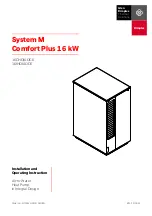
409-35036
Rev A
15
of 15
7 Troubleshooting
Use Table 4 to determine whether a problem exists. For repair service, contact TE Connectivity (see section 8).
Table 4: Troubleshooting guide
Problem
Possible causes
Remedy
Cylinder advances slowly,
intermittently, or not at all
Low hydraulic fluid in reservoir
Add fluid (section 6.2.2)
Release valve is open
Close the valve
Loose hydraulic coupler
Tighten all couplers
Excessive load
Reduce load to rated tonnage
Air trapped in system
Remove air (section 6.1)
Binding cylinder plunger
Check cylinder for damage. Contact TE
for service (section 8).
Cylinder advances, but
does not hold pressure
Leaking connection
Tighten connections and check for leaks
Leaking seals
Locate leaks and contact TE for service
(section 8).
Internal leakage in pump
Contact TE for service (section 8).)
Cylinder retracts slowly,
partly, or not at all
Release valve is closed
Open the valve
Overfilled reservoir
Drain fluid to fill line (
Loose hydraulic coupler
Tighten all couplers
Air trapped in system
Remove air (section 6.1)
Hose internal diameter too small
Use larger hose
Broken cylinder retractions spring
or other cylinder damage
Contact TE for service (section 8).)
8 Replacement and repair
DANGER
To avoid personal injury,
always
remove the battery from the tool
before
performing any maintenance on the crimping tool.
Order replacement parts through your TE representative. You can also order parts by the following methods:
Go to
Shop TE
Store
link at the top of the page.
Call +1 800 522 6752.
9 Revision summary
Since the last revision of this document, the following changes were made:
Initial release

































